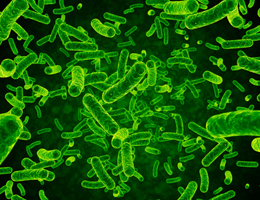Fluctuating conditions favor cooperation
Karl Wienand, Erwin Frey and Mauro Mobilia

Unpredictable environments are the norm rather than the exception in natural populations. From availability of nutrients to temperature, the conditions in which a population lives change all the time. This is particularly true for bacteria, which live in relatively small spaces, making them more subject to abrupt changes. Even those, like the human microbiome, hosted inside larger animals experience different abundance of nutrients during the day, and are flushed in hormones and other chemicals that the host produces and which can affect their growth.
Unpredictable conditions change what individuals are more adapted, which is where recent studies mostly focused on. However, changing environments can affect evolution also through the population size. For example, when available nutrients increase, the population can grow, whereas when nutrients are scarce, individuals starve and die out. The changing population size has far reaching consequences, as it tunes the amplitude of demographic fluctuations (the fluctuations due to individual birth and death events). In a small population, in fact, a few individuals dying just by chance can spell extinction for their strain, even if it was better adapted. In larger populations, instead, major changes in composition require many births and deaths. Here we study an environment that switches randomly between abundant and scarce resources. As a result, the population size fluctuates, which leads to a coupling between environmental and demographic noise. We consider a population consisting of a fast-growing and a slow-growing strain, which can be interpreted as a public-good producer. Deterministically, the slow strain is doomed to go extinct, but random fluctuations can ensure its survival.
We find that the rate at which the environment changes determines different regimes of population size behavior, and different survival probabilities of the slow strain. We provide analytic descriptions of the size distribution and of the probability that the slow strain eventually fixates. We also apply these results to describe a scenario in which the public good facilitates population growth. Remarkably, in all the analyzed parameter ranges, the random environment improved the survival chances of the slow strain, compared to a constant environment.
On a broader perspective, our work sheds light on the complicated interaction between different dynamics in evolution and in particular of non-selective effects. It also provides interesting insights on how environmental conditions can offset selective disadvantages and foster the survival of cooperation.

